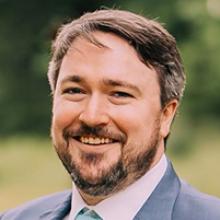How to Address the Shortage of Primary Care Providers in the United States
Primary care access and utilization is the cornerstone of the U.S. health care system, providing a crucial first point of contact for individuals seeking medical attention and playing a pivotal role in disease prevention, early detection, and management of chronic conditions.
However, access to primary care is uneven across the country, with some counties having no primary health care providers and other counties having an abundance. This primary care supply problem is anticipated to grow, with the U.S. ultimately facing a shortage of more than 120,000 physicians over the next decade. While there is significant interest among federal lawmakers and key health care stakeholders in addressing this shortage, our research shows that currently proposed legislation will likely fall short and more research and innovative approaches are needed.
Studying Current Efforts to Address the Shortage
In a quasi-experimental design study, we found the current incentives offered by the Health Services and Resources Administration (HRSA) had limited effects in increasing provider supply. HRSA offers providers a number of financial incentives to relocate and practice in a primary care Health Professional Shortage Area (pcHPSA). These incentives include National Health Service Corps scholarships and repayments of student loans up to $50,000, the J-1 visa waiver program, and Medicare bonus payments for physicians.
We found evidence that these incentives are not equally effective in increasing provider supply across all counties. For instance, there was a significant increase in the population-adjusted physician rates in rural counties, starting three years after such areas received a pcHPSA designation. However, we did not find similar results for primary care physician supply in non-rural pcHPSA counties and for the number of Advanced Practitioner Nurses (APNs) in rural and non-rural pcHPSA counties.
The incentives in the proposed Primary Care and Health Workforce Act are similar to those HRSA currently offers, and as a result we believe that if it becomes law, this bill would have a similar, muted effect on the primary care provider supply. The $26 billion bipartisan bill aims to expand medical and dental services, provide incentives for providers to practice in underserved areas, and increase support for individuals studying to become primary care providers. The bill would give primary care providers scholarships and provide debt forgiveness to encourage them to practice in shortage areas, as well as increase funding for primary care residency slots and nursing programs.
Recommended Research and Policy Actions
While the future of the bill remains to be seen, the debate surrounding it illustrates the importance of addressing our primary care shortage and exploring which set of incentives would most effectively address the shortage. To understand the optimal incentives needed to close the shortage gap, policymakers and researchers must delve deeper into the potential drivers of the shortages. We recommend further investigation into the following factors:
- The association between payer mix (i.e., the proportion of individuals with private insurance, Medicare, and/or Medicaid) and primary care provider shortages in an area.
- The association between scope of practice laws, for APNs and physician assistants and primary care provider shortages in an area.
- The association between telehealth service utilization and pcHPSA designation during the COVID-19 public health emergency when payers, such as Medicare, waived a number or requirements and increased the reimbursement rate for telehealth services.
- The role that national immigration policies may play in determining provider supply in the U.S., including the increasing wait times for foreign-trained physicians and APNs to obtain permanent residency status.
- The role that state laws (e.g., abortion bans and gun control) and local conditions (e.g., gun violence and crime statistics) may play in provider relocation decisions.
While it is commendable for policymakers to propose ways to address the primary care shortage, such as the Primary Care and Health Workforce Act, investigation into root causes can provide additional approaches that are backed by research.


